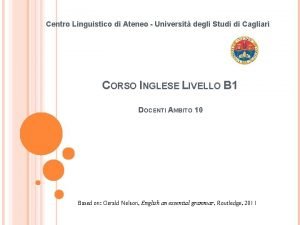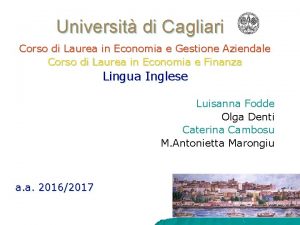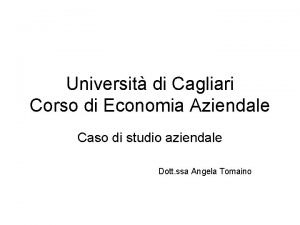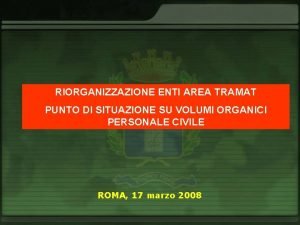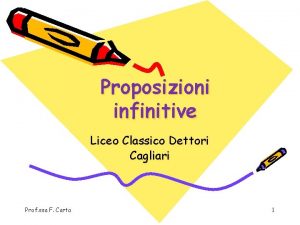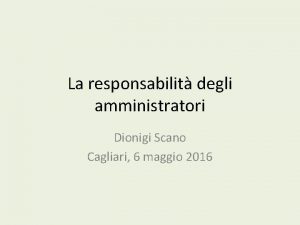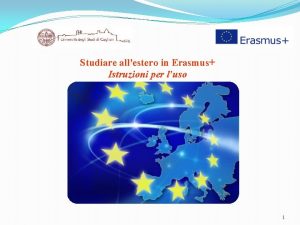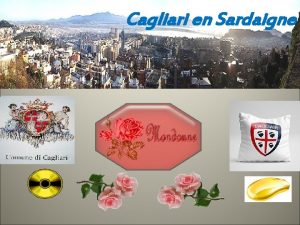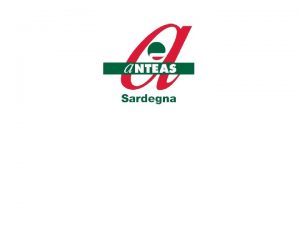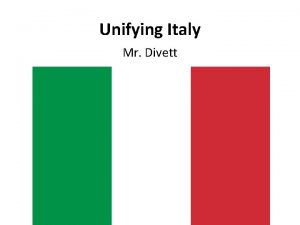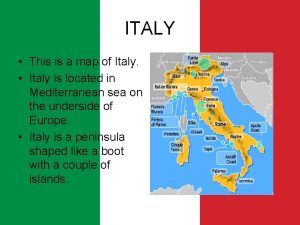Giorgio Crasto University of Cagliari ITALY Forest Modelling















- Slides: 15

Giorgio Crasto University of Cagliari - ITALY Forest Modelling A canopy model for Wind. Sim 4. 5

Giorgio Crasto University of Cagliari - ITALY Why the need for a canopy model

Giorgio Crasto University of Cagliari - ITALY § In the new canopy model of Wind. Sim the Canopy Layer is solved by the use of porosity and drag forces (sinks of momentum) § The canopy is described by: § Height of the canopy – hc § The canopy is discretized with a caertain number of cells (uniform grid? ) § Underwood roughness length – z 0 § Porosity – b § Drag coefficients – C 1 and C 2

Giorgio Crasto University of Cagliari - ITALY Concept of Porosity § Given a generic volume occupied by fluid and solid phases, its porosity b is defined as the ratio

Giorgio Crasto University of Cagliari - ITALY Concept of Porosity § Given a surface partially permeable, also a porosity for a 2 D windbreak can be defined as

Giorgio Crasto University of Cagliari - ITALY Concept of Porosity § Once done an hypothesis on the structure of the porous region, there is a relation linking b and b. S z HIGH x EAST Darcy’s velocity

Giorgio Crasto University of Cagliari - ITALY Every element of the canopy introduces in the flow a sink of momentum § So inside the canopy the momentum RANS equations present an additional term Advection Diffusion Additional forces: pressure gradient, gravity, adittional sources

Giorgio Crasto University of Cagliari - ITALY The sinks of momentum depend upon porosity and velocity § A classical approach (for high porous materials) is to consider the sinks of momentum proportional to the velocity § In the Darcy’s law the advective and diffusive terms are neglected, so the gravity Darcy’s law

Giorgio Crasto University of Cagliari - ITALY Sinks of momentum implemented in the new version of Wind. Sim § Sinks of momentum [N/m 3]: two terms Since the high Reynolds numbers viscous force pressure >> viscous forces

Giorgio Crasto University of Cagliari - ITALY Present model § In the canopy model of Wind. Sim 4. 5 is possible to set the drag coefficients C 1 and C 2 where

Giorgio Crasto University of Cagliari - ITALY How to estimate the porosity k? § The relation k vs. b is proposed: In this way it’s possible to estimate the value of the drag coefficient C 1 starting from a given value of porosity b

Giorgio Crasto University of Cagliari - ITALY

Giorgio Crasto University of Cagliari - ITALY

Giorgio Crasto University of Cagliari - ITALY

Giorgio Crasto University of Cagliari - ITALY Conclusions § With the proposed canopy model is possible to estimate properly the dissipation of momentum and the production of turbulence inside a forest § Further validations are needed in order to state more precise guidelines for the choice of the parameters C 1 and C 2 used together § Masts inside forests § Wind farms close to forests § A possible treatment of a canopy would be with additional sources in the transport equations of k and e
 Zaha hadid cagliari
Zaha hadid cagliari Congresso sicob cagliari
Congresso sicob cagliari Facoltà medicina cagliari
Facoltà medicina cagliari Moodleü
Moodleü Centro linguistico ateneo cagliari
Centro linguistico ateneo cagliari Cagliari pronunciation
Cagliari pronunciation Economia e gestione aziendale cagliari
Economia e gestione aziendale cagliari Liceo classico europeo cagliari
Liceo classico europeo cagliari Serimant cagliari
Serimant cagliari Proposizioni infinitive
Proposizioni infinitive Ordine degli psicologi della sardegna
Ordine degli psicologi della sardegna Dionigi scano cagliari
Dionigi scano cagliari Scuola dettori cagliari
Scuola dettori cagliari Scuola randaccio cagliari
Scuola randaccio cagliari Aou cagliari
Aou cagliari Ismoka cagliari
Ismoka cagliari




